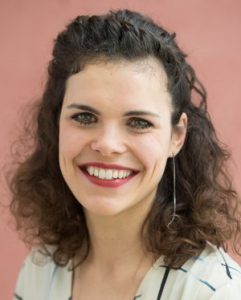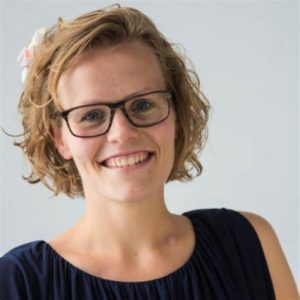How LEARN! supports primary and secondary schools in mapping social-emotional functioning and well-being for the school scan of the National Education Program
28 Jun 2021 | Catch-up programmes, Teachers
Extra support, catch-up programmes, learning delays, these have now become common terms in education. With the extra resources (8.5 billion, of which 5.8 for primary education and 2.7 for secondary education) that have been made available for the National Education Program, schools can invest in the development and recovery of their students during and after corona. Schools are working hard to expand their school plan to invest in extra hands, professionalization, materials/methods, etc. over the next 2.5 years. This is an enormous challenge, especially when taking into account the current teacher shortage.
Anne de Bruijn, Anne Fleur Kortekaas-Rijlaarsdam


Step 1 in this process is the school scan in which schools bring into view the cognitive and social-emotional functioning of their students. Cognitive learning delays have already been extensively examined in research (see e.g. Engzell, Frey & Verhagen, 2021; Haelermans et al., 2021) ). At school level, data on cognitive learning growth is already extensively collected in the student monitoring system, for at least reading, spelling and mathematics. Through the National Education Cohort Research (NCO) and CITO, schools receive reports about their own school compared to other schools in the Netherlands.
Many schools also indicate a need for data on the social-emotional functioning and well-being of their students. Initial studies on student well-being after school closures suggest that, on average, there was no effect of school closures on student well-being, but that there are differences between schools. Student well-being was higher in schools where more or all students were well reached with distance learning, where active mutual contact between students was organized (also outside the lessons), and where material was not only repeated, but where also new material was offered (Gaikhorst et al., 2021).
However, most schools have little insight into the social-emotional functioning and well-being of their students because this data is not collected by default. We (LEARN!) aim to help schools with this. Together with the Research Center for Education and the Labor Market (ROA), we are evaluating the catch-up and support programs that schools used during the past school year (IOP scheme, 5 application rounds for which EUR 590 million was available in the 2020-2021 school year). Part of this evaluation is also to examine the effects on the social-emotional functioning and well-being of students. For this purpose, students in secondary education and parents of students in primary education completed a digital questionnaire about their (child’s) social-emotional functioning and well-being. The questionnaire consists of multiple, validated questionnaires and measures motivation for school (Intrinsic Motivation Inventory; Ryan & Deci, 2000), academic self-concept (for PO: CBSK van Veerman et al., 2004; for VO: SDQ-II van Marsh, 1990 ), school well-being (School questionnaire by Smits & Vorst, 2008) and social acceptance at school (Social Acceptance questionnaire from the PRIMA study; Vandenberghe et al., 2011). More information about the measured concepts and the questionnaires used can be found at the bottom of this blog.
The questionnaire used, and the data collected at a large number of schools that participate in the IOP scheme, can be used to provide schools with a quick picture of the social-emotional functioning and well-being of their students. Since May, LEARN! provides the questionnaire, therefore, also to schools that do not participate in the evaluation study. Schools can register for this, to receive a school-level report after parents or students at their school filled out the questionnaire. This report provides insight into the social-emotional functioning and well-being of the students at the school in question. The data are presented in comparison with the students from all other schools that completed the questionnaire. In this way, the school does not only receives raw scores, but they can also immediately see how their students are doing compared to other schools in the Netherlands. The report also provides the schools with a number of questions to consider, in order to connect these results to available data of the school (observations, parent- student interviews). A great service that schools are grateful for!
If you have any questions about or if you are interested in the questionnaire used, please do not hesitate to contact us. If you want to see an example report, look here (only in Dutch). Curious about the results? Then you have to be patient a little longer. Most programs end around this time, or have just ended. Parents and students are therefore now filling in the questionnaires again, so that we can visualize changes. We hope to be able to share the first results of this sub-study in August.
References
Engzell, P., Frey, A., & Verhagen, M. (2021). Learning loss due to school closures during the COVID-19 pandemic. Preprint https://osf.io/preprints/socarxiv/ve4z7/
Gaikhorst, L., Karssen, M., Tiekstra, M., Looijen, M., & Volman, M. (2021). Corona en welbevinden. Didactief, april: https://didactiefonline.nl/artikel/corona-en-welbevinden
Haelermans, C., Van der Velden, R., Aarts, B., Bijlsma, I., Jacobs, M., Smeets, C., Van Vugt, L., & Van Wetten, S. (2021). Leergroei deels hersteld, behalve bij begrijpend lezen. NCO Factsheet No. 5
Marsh, H.W. (1990) Self-Description Questionnaire-II Manual. Campbelltown, NSW, Australia: University of Western Sydney.
Ryan R.M. & Deci, E. L. (2000). Self-determination theory and the facilitation of intrinsic motivation, social development, and wellbeing. American Psychologist, 55, 68–78. http://dx.doi.org/10.1037/0003-066X.55.1.68
Smits, E. & Vorst, H. (2008). Schoolvragenlijst Handleiding. Herziene uitgave 2008, Pearson, Amsterdam.
Van Bael, L. (2013). Ontwikkeling en validatie van een vragenlijst voor contingente zelfwaardering voor adolescenten. Ongepubliceerde masterproef, KU Leuven.
Vandenberghe, N., Cortois, L., de Bilde, J., Van Petegem, P. & Van Damme, J. (2011). Longitudinaal onderzoek in het basisonderwijs. Leerlingperceptievragenlijst zesde leerjaar (schooljaar 2008-2009). SSL/OD1/2011.44, Leuven: Steunpunt ‘Studie- en Schoolloopbanen’ (SSL).
Veerman, J.W., Straathof, M.A.E., Treffers, Ph.D.A., Bergh, B.R.H. van den & Brink, L.T. ten (2004). Competentiebelevingsschaal voor kinderen. Amsterdam: Harcourt Test Publisher
Vos, N., Van Der Meijden, H., & Denessen, E. (2011). Effects of constructing versus playing an educational game on student motivation and deep learning strategy use. Computers & Education, 56(1), 127-137. https://doi.org/10.1016/j.compedu.2010.08.013
Measured concepts and questionnaires
First of all, this test battery contains a questionnaire to measure motivation for school. The Intrinsic Motivation Inventory (IMI) by Ryan & Deci (2000) was used for this purpose – a commonly used questionnaire to measure motivation. The questions in our questionnaire specifically ask about the motivation for school. An abbreviated Dutch version of 14 questions was used, which was validated with primary school students (Vos et al., 2009). The questions address three components of motivation, namely perceived competence, interest and effort.
Secondly, (parents of) students are asked about the academic self-concept: the perceptions that students have of their academic skills. In order to take into account age differences between students, different questionnaires were used in primary and secondary education. Parents of students in primary education completed the sub-scale School Skills of the Competency Experience Scale for Children (CBSK; Veerman et al., 2004), consisting of 6 questions. Secondary school students filled in the Dutch translation of the Self-Description Questionnaire-II (Marsh, 1990; translated by van Bael, 2013 for the LISO study into school careers of Flemish secondary school students). This questionnaire asks about their own perception of their skills and performance in Mathematics, Dutch and for school in general.
Thirdly, (parents of) students were asked about school well-being: the extent to which students appreciate and are satisfied with daily life at school. For this purpose, the School Well-Being scale from the School Questionnaire by Smits & Vorst (2008) consisting of 9 questions was used.
Finally, (parents of) students were asked about social acceptance, referring to the social relationships a student has with fellow students. The Social Acceptance questionnaire from the PRIMA study was used for this purpose (Vandenberghe et al., 2011; the predecessor of the COOL study into school careers of students). This questionnaire consists of 6 questions.
Bekijk ook informatie voor:
Meest recente blogs:
Recent Posts
- How LEARN! supports primary and secondary schools in mapping social-emotional functioning and well-being for the school scan of the National Education Program
- Conference ‘Increasing educational opportunities in the wake of Covid-19’
- Educational opportunities in the wake of COVID-19: webinars now available on Youtube
- Homeschooling during the COVID-19 pandemic: Parental experiences, risk and resilience
- Catch-up and support programmes in primary and secondary education
- Home education with adaptive practice software: gains instead of losses?
- A COVID-generation: who are the winners and losers of a disrupted school year? Reflections from the Netherlands.
- Children’s play in the COVID-19 pandemic
- COVID-19: do we need to redefine practices for school inspections?
- Standardized assessments in times of COVID-19: Understanding short and long-term effects
